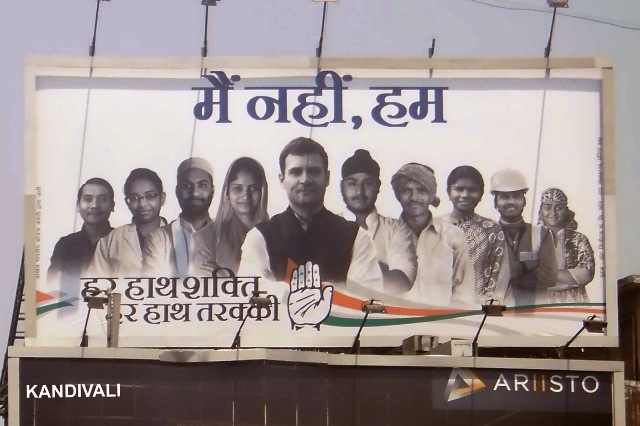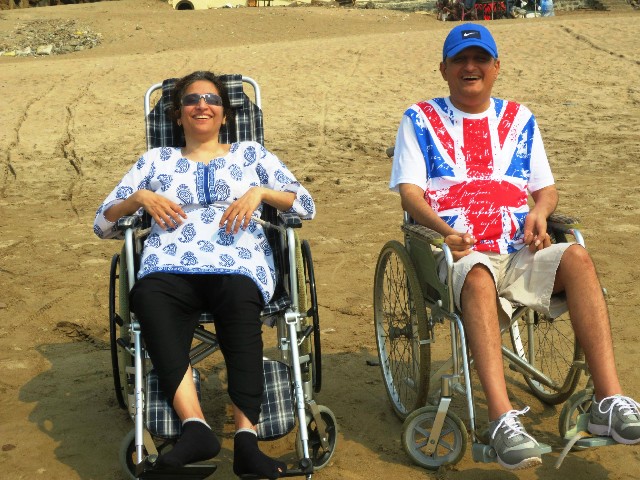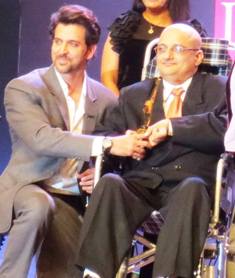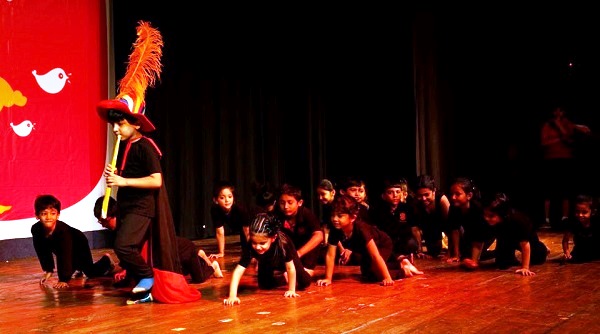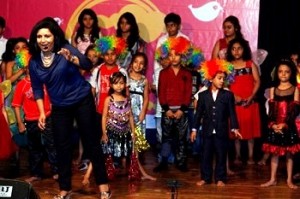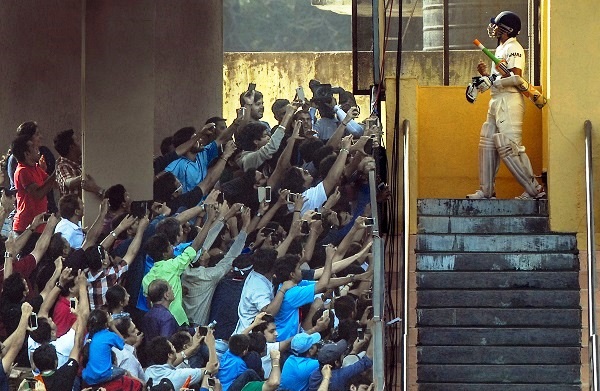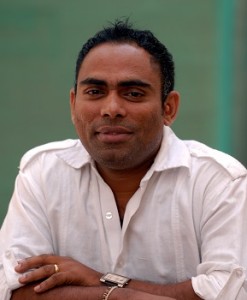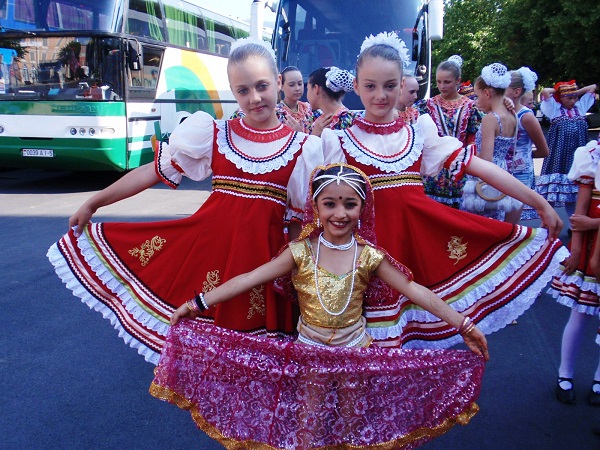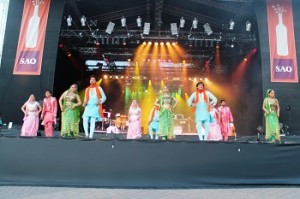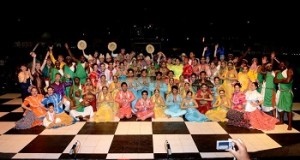How are outdoor advertising campaigns for political parties planned? And how was this election season different from the previous editions?
by The Editors | editor@themetrognome.in
As the election campaigning draws to a close in Mumbai, advertising across political parties is reaching a fever pitch. Lok Sabha 2014 has seen some of the most aggressive advertising campaigns from the country’s two principal parties – the Congress and the BJP. It seems that every available space, whether on print or online or on the air, has been taken up by election advertising.
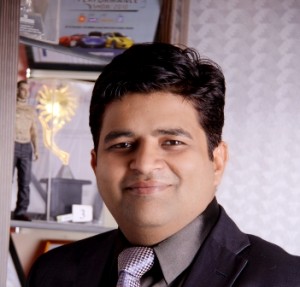 The Metrognome spoke to Global Advertisers’ Managing Director, Sanjeev Gupta (in pic on left), to find out more about the business of election advertising in the outdoor space.
The Metrognome spoke to Global Advertisers’ Managing Director, Sanjeev Gupta (in pic on left), to find out more about the business of election advertising in the outdoor space.
Excerpts from the interview:
How does the election season benefit a business such as yours?
Outdoor media is the most important channel of communication for political campaigns, which mainly rely on political marches, rallies, morchas, dharnas, and door-to-door campaigns to get the message across. All forms of political campaigning happen outdoors. Moreover, 2014 is particularly special because the campaigns are managed with unprecedented professionalism and there is a marked corporate flavour in the way the campaigns are being conceptualised, planned and executed.
These factors are translating into good business. Our media properties played a prominent part in campaigns of nearly all major political parties.
What are some of the requirements from clients?
All requirements from clients ultimately seek to accomplish one task – of scoring with the voters. They want advertising to be visible to voters. They want the media to work its magic at the right time.
Typically, an election campaign follows four stages: One, the introduction. Two, meeting the voters. Three, spreading information about the candidate/party’s USP. While the fourth stage is getting voters to choose the candidate on the big day.
At every stage, companies like ours offer our clients outdoor sites/ hoardings and other media to help them achieve their goals. We must hand-hold the client through the campaign, at every step, from printing to mounting of flex, and ultimately, to providing post-campaign feedback.
What kinds of strategies are required to stand out among hundreds of other outdoor campaigns?
Our strategy has been to coordinate very closely with clients, offer competitive rates, select media carefully and dish up the right media mix. Above all, we have been on our feet for 11 hours for the last three months to accommodate changes in plan, content and sites.
That said, the secrets of standing out in a crowded marketplace are not really new.
Be clear about what you set out to achieve. Be better at service, and with the quality of billboards and other media. Be different from everyone in the way you frame your message, offer tailor-made solutions that work within the budget and out-innovate the competition.
What are some of the new types of outdoor advertising seen this election season?
More mobile vans with mounted hoardings were used in this season than ever before. Parties used concepts like ‘chai pe charcha’ and ‘e-chaupal’ and successfully harnessed cutting edge technology and offered it to voters in different parts of the country, which created quite a buzz.
Even with traditional outdoor advertising, the complimentary role of online and mobile media has increased several-fold. These changes hint at the shape of things to come.
This time, special creative content was designed for specific locations for better impact. There were cut-outs, LED, back-lit, 3-D and digital displays. The power of outdoor advertising was displayed like never before in this election. You can see this from the unusually high voter turnout this time.
In monetary terms, what is the kind of boost that your business gets in election season?
All things remaining same, this election season, we expect business to grow by 50 per cent compared to the same period in a non-election year. This is, of course, a rough estimate.
On an average, how much do political parties spend on outdoor advertising?
I cannot discuss figures without explicit permission of a client but if you know the campaign expenses that are made public, you can safely conclude that outdoors gets anywhere between 40 to 50 per cent of the total outlay in a political campaign.
How does outdoor score over other media when it comes to election campaigns?
People who step out regularly either to commute, shop, visit friends or places of worship are more likely to step out to vote on the big day, too. It therefore makes more sense to invest in outdoor advertising than any other medium because the target demographic (voters) and the medium (billboards and other outdoor media) and the desired outcome (influencing voter behaviour in favour of a particular candidate/party on the day of voting) are 1) in the same geographical area, 2) are likely to be the same people (people who are outdoors on other days are also likely to vote on election day), and 3) the campaign, message, brand positioning can be tailored to address the specific demographic in that particular area.
Traditional election campaigns focussed on communicating achievements. This has changed as this time the efforts were on convincing voters and not merely communicating. The entire outdoor media fraternity – vendors, creative minds, agencies, mounters – have taken up this new challenge and have gone ahead to do an excellent job of it.
‘Your Vote’ is a column capturing the Lok Sabha 2014 fervour in Mumbai. If you have an interesting insight or trend to be featured here, write to editor@themetrognome.in with the subject line ‘Your vote’.
(Pictures courtesy www.indiaprwire.com, globaladvertisers-outdooradvertisers.blogspot.com)
